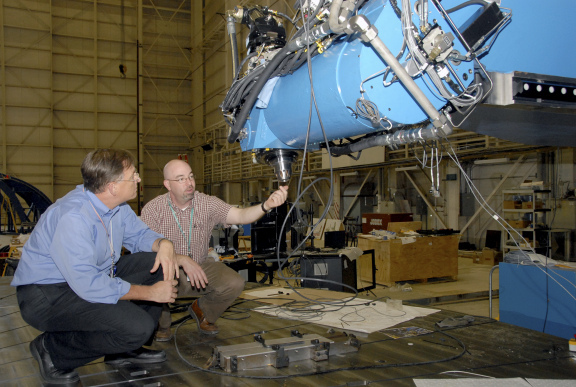
The so-called ‘valley of death’ in Australian naval shipbuilding is already upon us, but we also have the means to reduce the severity and then to build on this traumatic experience to create a productive, innovative and sustainable industry that provides a strategic resource to Australia.
Recent debate on Australian naval shipbuilding culminated in the unprecedented announcement that future programs would be run on a continuous production basis for frigates and offshore patrol vessels. A similar approach has been mooted for the future submarine program.
This has been motivated by the detrimental effects on the skilled workforce of discontinuous shipbuilding programs. Even with the most expeditious progress on naval programs, there have already been shipbuilding workforce reductions in Newcastle and Williamstown.
Fortuitously the national expertise in new robotic technologies, combined with new design processes that are readily applicable to shipbuilding, presents an extraordinary opportunity over the coming two or more decades for the massive shipbuilding programs announced by government. To meet new challenges to our naval shipbuilding program, we need to retain highly skilled shipbuilding staff for engagement in a focussed research and development program to extend the current state-of-the-art technology.
I recently attended a full-day workshop run at the laboratory of the Australian Centre for Field Robotics (ACFR) at the University of Sydney, in collaboration with the Australian Centre for Robotic Vision (ACRV) at the Queensland University of Technology. The two prominent themes of the day were:
- Human–robot collaborative working, whereby a human provides the insight for understanding new complex problems and tasking for solutions. The implication here is that with disruptive technology such as robotic systems, it’s important to retain the more expert human workers to mentor the robotic capability and to deal with new and novel challenges. Evidence for this principle was presented by ACFR staff from the Mine Automation program for Rio Tinto in Western Australia that began in 1997 and is still under active research and development.
- Renewed interest in application of robotic automation in less structured environments such as building construction sites and shipyards. Currently robots work well in exclusively automated environments where the safety risk is mitigated either by excluding humans completely or by anchoring the robots as in automotive production lines. An example of what could be done in shipbuilding is Thales using robotic welding machines for the Bushmaster armoured vehicles built in Bendigo.
At the workshop, I mentioned the $90 billion commitment made recently to continuous build programs for ships and submarines, and I urged the robotic R&D community to bid for research funding from that investment to develop world-leading construction robotic systems for building and ships.
The workshop has recently toured Australia, including Mackay, Wollongong and Adelaide where ASC staff participated. Others engaged in shipbuilding have reported interest in the use of robotic welding systems. This confirms the robotics expertise in Australia is already significant and has the capacity for redirection to new areas.
The Australian recently reported that robotic bricklaying is being introduced to housing construction; shipbuilding has many similar skilled trades where repetitive accurate work is required and similar technology could be applied.
The current turmoil in the shipbuilding workforce presents the opportunity to initiate a significant shipbuilding automation research and development program based on Australia’s current robotics capabilities. This will have three beneficial outcomes for the nation:
- We will leverage the already advanced level of national robotic expertise in the direction that’s already been identified for further research, namely unstructured sites such as buildings and shipyards.
- We will gain greater technology transfer from the shipbuilding investment program into major Australian industries, including building and infrastructure construction.
- We will retain in the industry the most expert shipbuilding workers to collaborate with robotic systems as key to the next stages of automation.
I urge each of the contending SEA 1000 CEP teams to include a research and development program in their submission that includes the above proposal. ACFR and ACRV have been alerted to this opportunity so access to greater details of capability and future directions can be readily obtained.
More importantly, this approach can be applied more effectively now than at any other time in the forthcoming naval shipbuilding programs. To attempt to retrofit robotic technology into a program for which detailed design is complete would be counter-productive. It’s better to design for automated manufacture, rather than to modify design intended for manual work.
The technological developments will also have significant export potential, both internationally and to other industries. The international exports will be assisted by the presence in the naval shipbuilding programs of international companies engaged precisely for their design capabilities and international supply chain participation.
Finally, this approach will engage shipbuilding workers who are currently facing a bleak period until the initiation of the naval programs. Those workers should now be reassured that there’s a role for some of them in the near term to engage in the research and development programs and to work as collaborators for the robotic systems that will be introduced in the near future.

